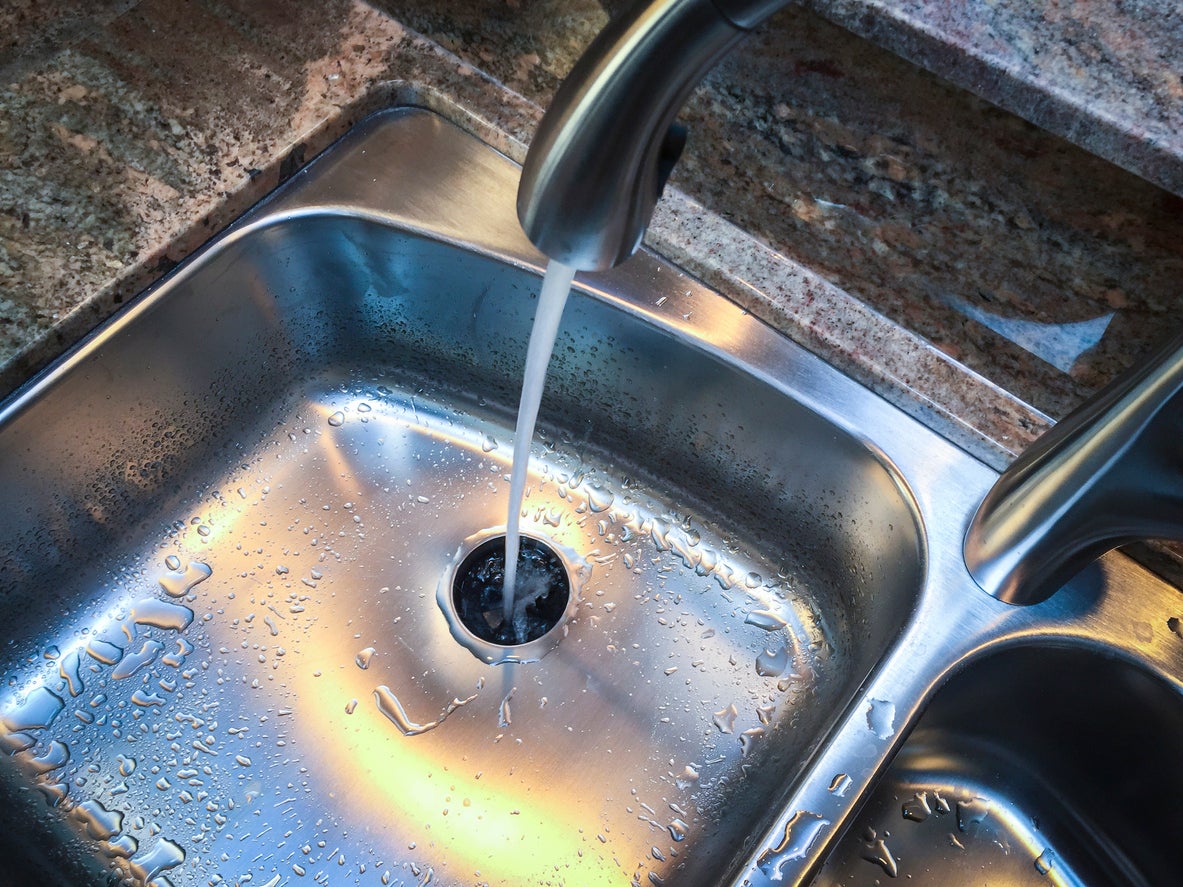

Using your hand, tighten the drain sink to secure the tailpiece. The tailpiece should have enough length of the same level as the pipe that it will be connected to. It connects the drain to your elbow pipe. Place the washer over your threads on the underside of your drain and then secure using the large bolt that comes with the drain.

The drain comes with a washer when purchased. Press down the drain firmly and clean the excess putty. Put it underneath the lip drain and set this drain into your sink opening. The rope of the plumber’s putty should be long enough to fit the circumference of your drain. Roll 3.2mm plumber’s putty and place in the drain.
:max_bytes(150000):strip_icc()/leaking-garbage-disposal-2718868-08-ff274b48514041ba87cc17333e0b76fd.jpg)
If the plumber’s putty is too hard to remove, remove it using spirits or rubbing alcohol. Use a scrubbing pad with water to clean the area when you are done cleaning the putty. With your putty knife, scrape off the putty, and if it is hard to remove, use a razor to clean the excess.
Clean the plumber’s putty with a putty knife. Then, push your sink drain up through your sink to remove it. Use your pipe wrench to unfasten and remove the bolts securing your drain flange. Replacing your sink drain as well as installing new drain pipes Clean any remaining plumber’s putty, sealing gaskets, or debris from your sink opening. Next, remove the ring in the groove on your sink sleeve then remove the flange, sink sleeve, and the fiber gasket. Remove your mounting assembly by unfastening the mounting screws that hold the lower and upper rings apart. Put rags under your cabinet as protection if your unit drops preventing the cabinet floor from getting damaged. Ensure you hold the underside of your garbage disposal using your hands while you are removing it since the disposal is very heavy. To get rid of the snap ring insert your screwdriver under your ring to open it off the flange. Some models unscrew from the drain sink while others have a snap ring. The remaining wastewater in the p-trap should drain out into the bucket underneath it. Let the water in your P-trap drain into your bucket. The p-trap is a U-shaped pipe connecting to your garbage disposal and takes wastewater away from your garbage disposal. With an adjustable wrench remove the fittings on your P-trap. Put a bucket underneath your pipes to catch the wastewater present in the pipes. When you are disconnecting your pipes, most likely there will be wastewater in the pipe. This is applicable if yours is connected. Note that not all the garbage disposals connect to a dishwasher. Remove the pipe that connects your dishwasher to the side of your disposal. Loosen the hose clamp that attaches the dishwasher hose to your barbed dishwasher nipple and then remove the hose. With your voltage tester, ensure no electrical voltage before you put the wires back into the junction box. Unfasten the wire caps that secure the disposal wires to the home wires and then set the garbage disposal’s wires aside.įasten the wire capes over your exposed wires in your junction box and then put the wires inside the junction box then reattach the junction box. Disconnect the wires exposed and remove the plate that covers the junction on your wall. Use your screwdriver to remove the plate that is covering the cable connections at your disposal. If the disposal is hardwired, disconnect the wires. Unplug your garbage disposal unit from the wall. Unplug your garbage disposal from your wall socket. Confirm that your power supply has been cut off by trying to run your garbage disposal before moving on to the next step. Flip the switch that controls the electricity reaching your garbage disposal via the circuit breaker. Switch off the power supply from your electrical service panel or circuit breaker.  Cut off the power supply to your garbage disposal. Below is a step-by-step process of removing your garbage disposal: Part 1. By using the tools and materials listed in this article you will successfully remove your garbage disposal. This is a straightforward process that does not require any expertise. Hiring a plumber to remove your garbage disposal can be pretty expensive thus the need to do the job by yourself to save some money. MaterialsĬontinuous waste pipe, basket strainer, plumber’s putty, sink tailpiece. The following tools and equipment will be needed for the successful removal of your garbage disposal: Toolsīucket, screwdrivers, rag, hacksaw, channel-type pliers/ wrench.
Cut off the power supply to your garbage disposal. Below is a step-by-step process of removing your garbage disposal: Part 1. By using the tools and materials listed in this article you will successfully remove your garbage disposal. This is a straightforward process that does not require any expertise. Hiring a plumber to remove your garbage disposal can be pretty expensive thus the need to do the job by yourself to save some money. MaterialsĬontinuous waste pipe, basket strainer, plumber’s putty, sink tailpiece. The following tools and equipment will be needed for the successful removal of your garbage disposal: Toolsīucket, screwdrivers, rag, hacksaw, channel-type pliers/ wrench.




:max_bytes(150000):strip_icc()/leaking-garbage-disposal-2718868-08-ff274b48514041ba87cc17333e0b76fd.jpg)



 0 kommentar(er)
0 kommentar(er)
